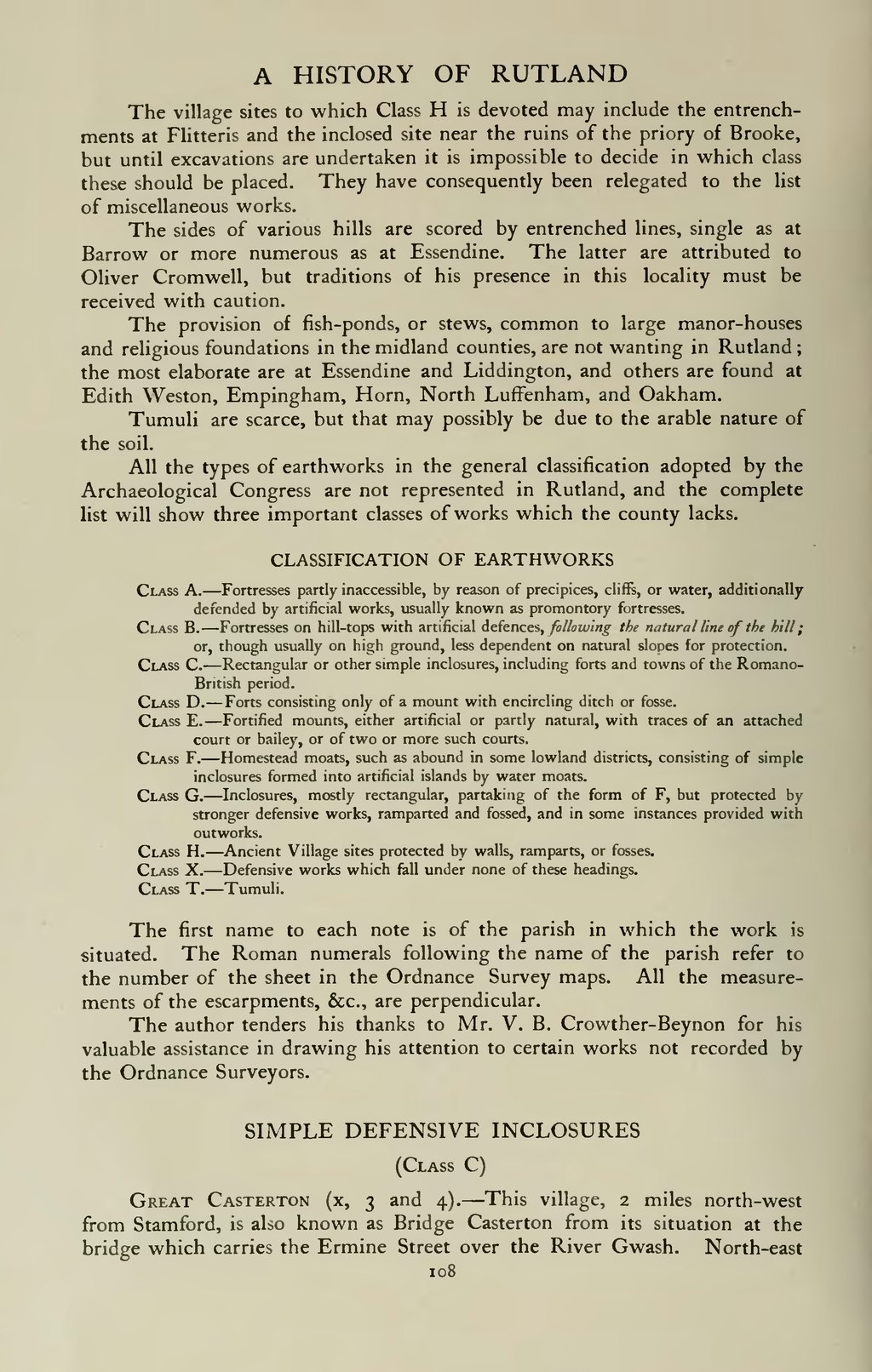A HISTORY OF RUTLAND The village sites to which Class H is devoted may include the entrench- ments at Flitteris and the inclosed site near the ruins of the priory of Brooke, but until excavations are undertaken it is impossible to decide in which class these should be placed. They have consequently been relegated to the list of miscellaneous works. The sides of various hills are scored by entrenched lines, single as at Barrow or more numerous as at Essendine. The latter are attributed to Oliver Cromwell, but traditions of his presence in this locality must be received with caution. The provision of fish-ponds, or stews, common to large manor-houses and religious foundations in the midland counties, are not wanting in Rutland ; the most elaborate are at Essendine and Liddington, and others are found at Edith Weston, Empingham, Horn, North Luffenham, and Oakham. Tumuli are scarce, but that may possibly be due to the arable nature of the soil. All the types of earthworks in the general classification adopted by the Archaeological Congress are not represented in Rutland, and the complete list will show three important classes of works which the county lacks. CLASSIFICATION OF EARTHWORKS Class A. — Fortresses partly inaccessible, by reason of precipices, cliffs, or water, additionally defended by artificial works, usually known as promontory fortresses. Class B. — Fortresses on hill-tops with artificial defences, fii/owing the natural line of the hill; or, though usually on high ground, less dependent on natural slopes for protection. Class C. — Rectangular or other simple inclosures, including forts and towns of the Romano- British period. Class D. — Forts consisting only of a mount with encircling ditch or fosse. Class E. — Fortified mounts, either artificial or partly natural, with traces of an attached court or bailey, or of two or more such courts. Class F. — Homestead moats, such as abound in some lowland districts, consisting of simple inclosures formed into artificial islands by water moats. Class G. — Inclosures, mostly rectangular, partaking of the form of F, but protected by stronger defensive works, ramparted and fossed, and in some instances provided with outworks. Class H. — Ancient Village sites protected by walls, ramparts, or fosses. Class X. — Defensive works which fell under none of these headings. Class T. — Tumuli. The first name to each note is of the parish in which the work is situated. The Roman numerals following the name of the parish refer to the number of the sheet in the Ordnance Survey maps. All the measure- ments of the escarpments, &c., are perpendicular. The author tenders his thanks to Mr. V. B. Crowther-Beynon for his valuable assistance in drawing his attention to certain works not recorded by the Ordnance Surveyors. SIMPLE DEFENSIVE INCLOSURES (Class C) Great Casterton (x, 3 and 4). — This village, 2 miles north-west from Stamford, is also known as Bridge Casterton from its situation at the bridse which carries the Ermine Street over the River Gwash. North-east 108
